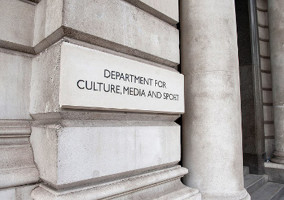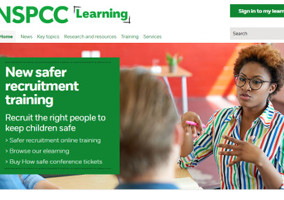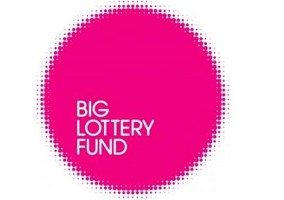After 485 days, the Charity Commission finally published its inquiry report into Oxfam. As expected, the 150-page document made for grim reading: the charity had failed to invest adequately in safeguarding, and had been more concerned about its reputation and its relationships with donors than about genuinely protecting people from harm. In a damning critique, Commission CEO Helen Stephenson said: “What went wrong in Haiti did not happen in isolation. Our inquiry demonstrates that, over a period of years, Oxfam’s internal culture tolerated poor behaviour and, at times, lost sight of the values it stands for. Significant further cultural and system change is required.”
As a result, the charity has been issued with an official warning by the Commission and trustees are required to provide regular updates to the regulator about its progress.
In general, the sector took the findings on the chin; most reactions were sombre and reflective, along the lines of: “we are all taking this seriously” and “we recognise there is more to do”. Only ActionAid vice-chair Andrew Purkis came out swinging for Oxfam; he wrote a long blog for Civil Society News, pointing out that the safeguarding failures took place against a background of immense upheaval at Oxfam – a context that the inquiry report neglected to acknowledge.
He said Oxfam’s leaders had been managing a whole new dimension of risk at the time thanks to the creation of Oxfam International. This enormous undertaking, to create a unified operation which would eventually be based in the global south and manage all of Oxfam’s programmes across the world, required what Purkis described as a “mindblowingly complex set of negotiations and implementation process”. It placed an extra layer of risk management on top of the normal, already huge, demands on any global institution operating in the most difficult environments, and it absorbed most of Oxfam GB’s unrestricted funding for years.
Purkis concluded: “The reported inadequacies of safeguarding resourcing and management should not be minimised, but understood in this wider context. The Commission’s report considers safeguarding in isolation, but Oxfam’s trustees and senior staff could not.
“Oxfam’s failure to invest more time and resources from 2012 into safeguarding was not to do with any moral or ethical deficit in its leadership. It was to do with choices made between a daunting range of competing claims on their attention, all of them morally compelling.”
Evidence against Oxfam
Not everyone agreed with Purkis’ assessment. In another blog, Charity Finance editor Gareth Jones highlighted some of the detail in the inquiry report, and asserted that this proved that the culture at Oxfam had indeed gone awry.
He wrote: “When the Oxfam country director at the heart of the allegations was allowed to resign in order to facilitate a ‘dignified exit’, it was not only a breach of staffing policies and procedures, it also sent entirely the wrong message to anyone with a complaint about staff behaviour.”
Jones went on to highlight a written submission from former Oxfam global safeguarding officer Bill Anderson, who told the International Development Select Committee that Oxfam had two overriding priorities in 2011: expanding services (sometimes described internally as “brand penetration” and “increasing market share”); and minimising risk.
On the latter, Anderson said he was at odds with the charity in early conversations. He wrote: “When I talked about risk, it was about protecting the vulnerable, whereas most risk conversations in Oxfam were about reputational risk and how to protect the Oxfam brand.”
In conclusion, Jones said: “I would not wish to argue that the senior leaders which allowed this culture to flourish were bad people. Groupthink is powerful … But equally, I’m not sure this can be written off as people struggling with the multitude of tasks in front of them.
“It is clear that culturally Oxfam had diverged from where it ought to be in quite a significant way and, frankly, the need for a culture that doesn’t tolerate harassment is so basic and obvious that it is hard to excuse.”
Endemic sector problem
Whatever your view on Oxfam, it’s hard to argue with another point Purkis made: “Oxfam have taken a mighty hit on behalf of all of us who were no more and, in many cases less, aware and well equipped than Oxfam in the dimension of safeguarding and aspects of HR culture.”
This is clearly true; several international NGOs have been guilty of allowing poor workplace practices to flourish. Save the Children, Amnesty International, Médecins Sans Frontières, Restless Development and the International Planned Parenthood Federation have all been exposed as sources of harassment, exploitation or bullying. And it’s not just the international sector that has hit the headlines; the Charity Commission has received hundreds of reports of safeguarding failures from charities across the country since the Oxfam scandal broke.
More evidence is emerging that some charities have a culture problem. A recent Unite survey of 850 union members from 238 charities, including Action for Children, Age UK, RSPCA, Save the Children, Oxfam and Mind, found that 80 per cent of employees felt stressed at work. Some 42 per cent of workers said that their job was not good for their mental health and 34 per cent did not feel valued at work. Siobhan Endean, Unite national officer for charities and the voluntary sector, said: “The survey’s findings are profoundly disturbing. While some charities and NGOs are committed to ensuring their staff’s welfare, it is clear many are not.”
Furthermore, a recent survey by Acevo and the Centre for Mental Health found that of charity employees who had reported being bullied at work, just 3 per cent felt their complaint was handled satisfactorily.
Beacons of best practice
Of course, that’s not to say that all charities have poor working environments. British Heart Foundation chief executive Simon Gillespie was recently named one of the top leaders in the country after being awarded a Glassdoor Employee’s Choice Award. Gillespie won a 91 per cent approval rating from staff, the 44th highest rating of any chief executive in the UK, and the only charity chief executive on this year’s list. It’s a safe bet to assume that staff and volunteers at BHF feel, on the whole, motivated, valued – and safe.
Judith Davey, chief executive at The Advocacy Project (TAP), says how genuinely listening to your staff can transform your organisation’s culture.
So while it’s plainly true that some charities have a lot of work ahead to make their organisations positive places to work, beacons of best practice also exist.
Start over, Oxfam International told
In striving to achieve best practice on safeguarding, charities could do worse than to read another report on Oxfam, published the day after the regulator’s report came out. This report, from the independent commission appointed by Oxfam International to review its safeguarding, has told the charity to “reinvent” its entire safeguarding system across its international confederation.
The 72-page report contains 30 separate recommendations for change, including reforming its board of supervisors and hiring a chief ethics officer and a lead survivor expert. It also says Oxfam should make reparations to help survivors “rebuild their lives on their own terms” and calls for the charity to establish multiple channels for reporting sexual exploitation and abuse. It suggests Oxfam should establish “an internal ombuds system” to provide staff with an independent and confidential place to report concerns. And it urges it to “strengthen and diversify its leadership team”, continue public reporting of safeguarding cases, and work with other aid organisations to achieve “systemic change”.
In response, Oxfam International executive director Winnie Byanyima said Oxfam would implement all the changes, adding: “I want to humbly apologise to all of the staff and community members who have been harmed by Oxfam, its people; its leaders; its culture.”
The wrong focus?
It has also been suggested that charities could be missing a key ingredient in their safeguarding efforts: engagement with their service users. Davey of TAP is concerned that charities are focusing on the wrong thing. TAP, which works with people in a variety of settings from high-security forensic units to eating disorder units, children’s hospitals and community projects, recently carried out a consultation to explore what its service users understand by safeguarding and keeping safe. These included people with dementia, physical and learning disabilities, and mental health issues.
“The results were a shock,” says Davey. “People didn’t seem to realise that many situations in which people are not safe result from a power imbalance or abuse of power. Most people talked about physical security, having locks on their doors etc. Some people confused safety with not being lonely – people with pets felt safer than those without, even if the pet is a domestic cat or a budgie. Very few people identified the risk of financial abuse, even though we know from our advocacy work that there’s an increasing trend here.”
She added: “Much of the current debate on safeguarding is on policies and reporting processes. Having a robust safeguarding policy is essential, as are transparency and accountability in reporting, taking action and learning lessons. But that doesn’t help if your beneficiaries don’t understand what keeping safe means in the context of their everyday lives. Engaging with the people that we work with is the key. Prevention is better than cure, as is nipping things in the bud.”
TAP will share the full findings of the project in due course, along with some ideas about how organisations can increase beneficiaries’ agency and empowerment in relation to safeguarding, including creating an environment in which people feel safe to speak out.
More problems for Oxfam
At the end of June, it was revealed that the independent commission appointed by Oxfam International had uncovered evidence that sexual exploitation was pervasive in an Ethiopian refugee camp and another refugee centre in Zambia, prompting Oxfam to open a new investigation into the claims. The Charity Commission also said it would assess this new information “as a priority”.
It seems clear that safeguarding is going to continue to cause problems for the sector for the foreseeable future; wise charities will be open to any new suggestions for how to get on top of it.
|
Related articles












